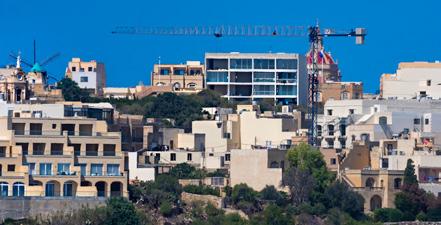
4 minute read
ANOTHER BRICK IN THE WALL?
from MONEY ISSUE 61
The proposals of mayor Noel Formosa to save the community in San Lawrenz may be controversial—he even broaches the idea of slight expansion of development zones—but he feels that desperate times call for drastic measures. Victor Paul Borg investigates.
“Although the population of San Lawrenz is increasing according to the electoral register,” the long-time mayor explains, “in reality, the living community—or those who contribute to the community—is shrinking. If we look at the sustainability of the school, for example, it may not be sustainable due to the shrinkage in the living community and decrease of pupils.”
Advertisement

Noel Formosa
As the living population is shrinking, the density of habitations is increasing, with an ever-increasing proportion of properties— mostly flats—owned by weekenders who reside in Malta throughout the week. Rows of flats line parts of the main streets of the small village on the western fringes of Gozo, and the village now also has a block of flats which villagers refer as “the high rise”—a five-storey block of flats behind the church.
“To have 5-storey flats in the village core of rural villages around Gozo is something that will have a very negative impact on the Gozitan topography,” Formosa said. “The main problem is that we are creating shabby flats that are not family oriented but once again to make easy money which in my opinion, is not sustainable.”
“We cannot have all of Gozo become like Marsalforn or Xlendi, at least we have to respect the rural villages that maintained their character,” he added. “I want to make it clear that we are not against having familyoriented buildings in the developing zone, but we are against having more buildings oriented solely for tourism.”
Five-storey blocks of flats in Gozo became possible five years ago when the Planning Authority changed the policy on heights of building in a document known as DC15. Before that, the permissible limit was a height of three floors and additional recessed floor; DC15 removed the height limit by storeys and changed it to a height limit by measure, or 14.6 metres. This prompted developers to start building blocks of flats with reduced floor height, and that way fit five stories in 14.6 metres.
Five-storey blocks of flats have now been rapidly sprouting throughout Gozo’s towns, a boom on the back of strong demand for flats by Malta-based residents. These flats are a pad for weekend visits, as well as an investment.

Five storey building subject to a constitutional lawsuit in San Lawrenz is only 50 metres behind the church
Property prices in Gozo have been rising steadily, although industry sources are increasingly talking about risks associated with an oversaturation of speculative property investments in a destination that remains seasonal. There is also the fear that these flats will erode Gozo’s attractiveness, primarily through the dilution of characteristic town fabric and community, and in turn, become an investment bubble.
Thousands of flats have been built in Gozo over the past several years, and thousands more are currently at the planning or building stage. Over the same period, the last census by the National Statistics Office shows that the number of households in Gozo increased by 900.

Five-storey blocks of flats are ruining the quintessential Gozitan townscapes of parish churches rising above village houses
The mayor of San Lawrenz, as well as other mayors in Gozo, lament that councils already must grapple with weekend problems concerning parking, traffic congestion, and rubbish collection. Weekend visitors do not tend to separate waste; they put everything in black bags and take them out of Sunday afternoons, causing rubbish collection headaches to councils.
In a letter to members of Parliament two years ago, Formosa wrote that the price of developable land or empty houses in San Lawrenz has risen to the point where only “speculators have the opportunity to buy.” He then proposed that financial incentives are given to sellers and buyers of vacant houses
He concluded by “drawing attention to the fact that the attractiveness of our country is found in communities that are scattered throughout the country, especially those localities that have retained an identity.”
A year ago, Formosa then proposed the council for the commissioning of a blueprint for development in the village. The proposal was based on the premise that development would be oriented towards family homes rather than holiday pads, and at the same time protect the topographic character and skyline integrity of the village. He also said that areas could be identified where development zones can be extended marginally, particularly by designating gaps of undeveloped land in-between existing ribbons of development as developable land. Yet the council shied from supporting the proposal after a lengthy discussion, mainly because some members, according to the minutes, saw the exercise as potentially conflicting with the role of the Planning Authority as well as an imposition on people’s free will.
“The idea would have been to consult with people, check that the development zone is sustainable, and see that buildings blend with the character of the town,” Formosa said, defending his proposal. “A report drawn up by experts after consultation would have helped us identify the needs of the locality. It could also have served as a model for other towns in Gozo.”
Victor is an investigative journalist with more than two million words and hundreds of pictures to his name, in books, magazines, and newspapers in every corner of the world.










